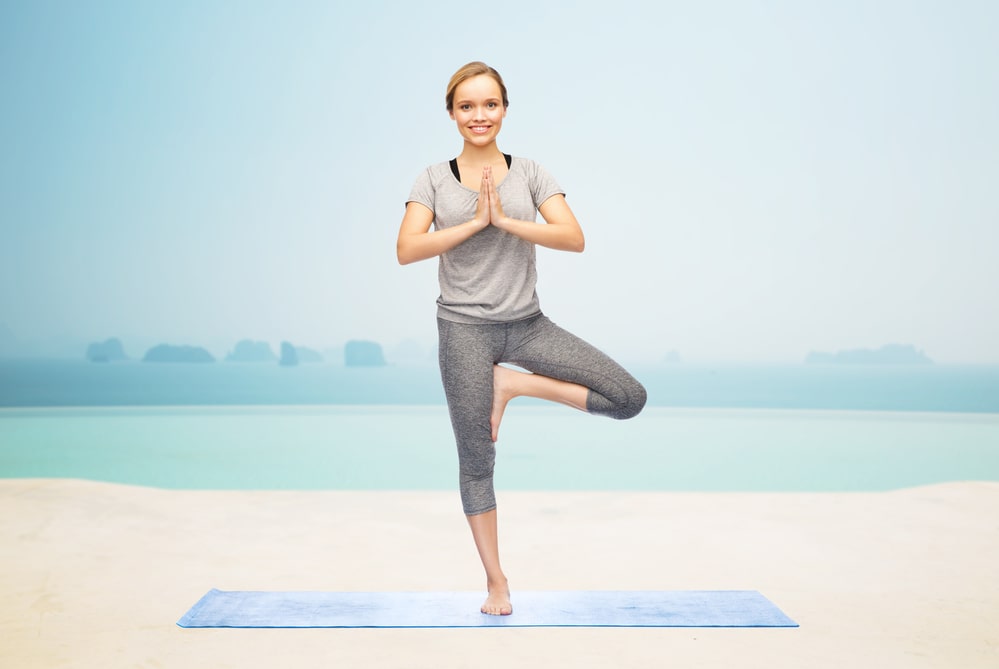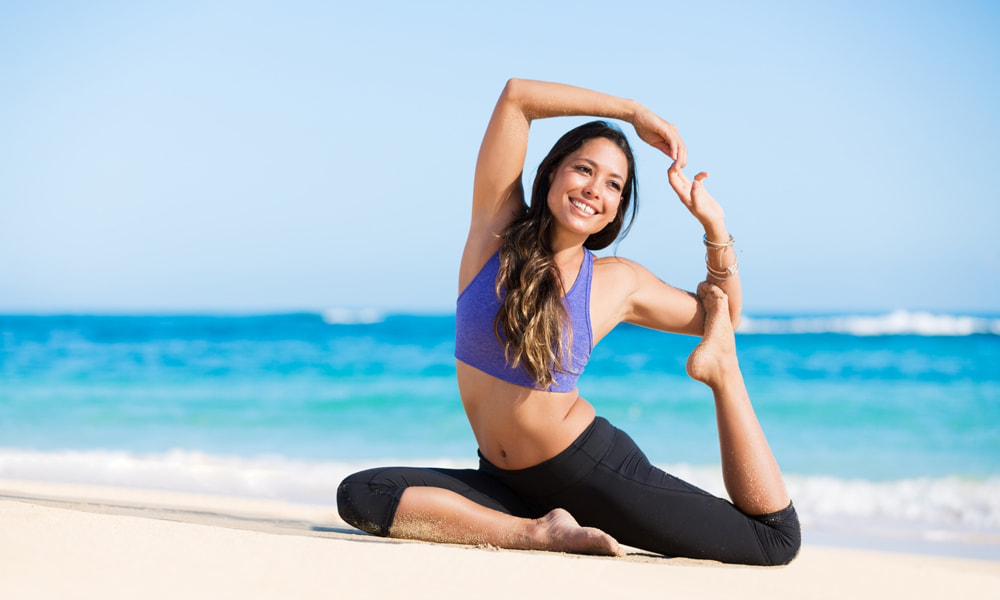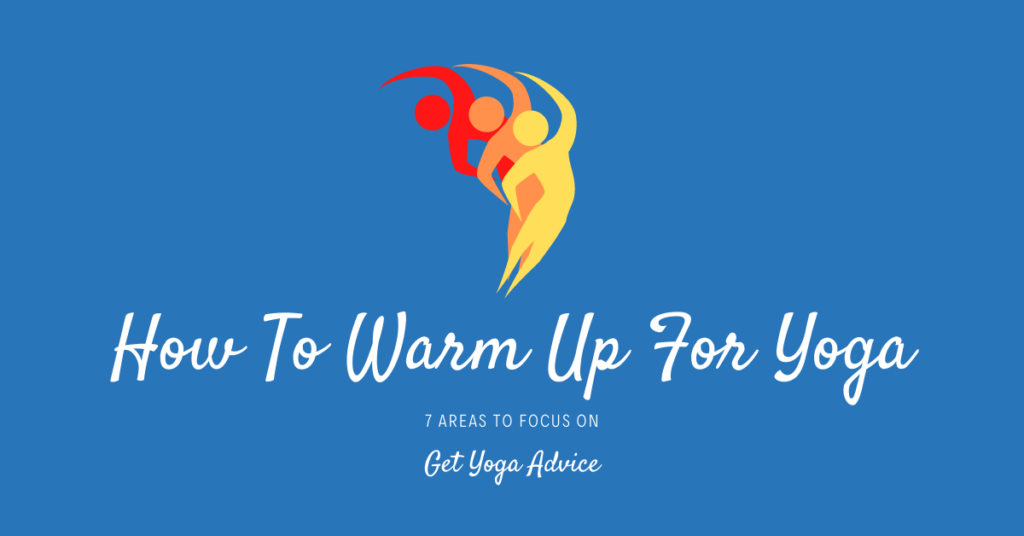Warming up is an essential part of every workout, even yoga. Learning how to warm up for yoga will prepare your body for deeper stretches get your body and mind into the right state before a longer session.
Now, you could go for a run or a cycle before a yoga workout, but if you’d rather warm up on the matt, we’ve got you covered. In this article, we provide some simple poses for 7 key body areas.
Contents
Why Warm Up For Yoga?
Yoga depends flexibility. If you haven’t practiced in a while or are sore from another type of workout, like running, the first few poses will find hard and awkward.
Warming up isn’t about how experienced you are, it’s about opening up the body and preparing it for what comes next. Performing a few simple poses means you can hold more complicated poses for longer.
Warming up also reduces a risk of injury and prepares the body ready for a challenging yoga practice. Most yoga warm up poses include a sequence of:
- Standing poses
- Sitting poses
- Prone poses
- Supine poses
Many warm up poses are much like basic yoga poses. For example, you can incorporate poses that are similar to the following in your warmup:
- Downward facing dog
- Child’s pose
- Mountain pose
- Crescent lunge
- Wheel pose
- Chair pose
The following warmup poses are a great place to start for new yoga practitioners. As you become more comfortable with your practice, modify as needed.
Warm Up These 7 Body Areas

We’ll assume you’ve arrived to the matt or studio without getting your heart rate up. Begin by sitting comfortably on the floor. Relax your shoulders and allow them to pull toward the ground. Take a few slow breaths in and out, holding your head in a neutral position.
1. Neck
The first area you’ll focus on is your neck.
- Inhale and turn your neck to the left, then exhale and turn it to the right.
- Inhale and bring it back to neutral position. Exhale and turn left. Repeat this three times.
- Next, let your chin drop to your check slowly as you exhale.
- Inhale and lift your chin toward the ceiling.
- Exhale and return to neutral position.
- Repeat this three times.
2. Shoulders
- Sitting in the same comfortable, neutral position, inhale and pull your shoulders up toward your ears.
- Exhale and let them fall down.
- Repeat three times.
- Next, place your fingertips on your shoulders pointing your elbows down.
- Inhale slowly.
- Now, lift your elbows.
- Exhale, rotate them so your elbows are pointing outward and then return them to pointing down.
- Keep your fingertips on your shoulders throughout the rotation. You should feel it opening up your collarbones and chest.
- Repeat three times.
3. Hands
- In a sitting position, interlock your fingers and stretch them out in front of you as you inhale.
- Face your palms out. Exhale and bring your hands toward the sky.
- Release your fingers and return to the original position.
- Repeat three times.
4. Triceps

- Raise your left hand and bend your elbow, place your hand over your shoulder.
- With your right hand, push your elbow gently to stretch your hand past your shoulder and onto your shoulder blade.
- Don’t force the stretch, but there should be a little bit of mild discomfort as it stretches.
- Repeat this stretch with the right arm, using your left hand to push.
5. Spine
- Sitting on your knees, bend forward and place your hands on the floor.
- Walk your hands away from your body gradually and slowly. You should feel a stretch in your arms, shoulders, and back.
- Slowly walk your hands back and sit up straight.
- From that position, unfold your legs and stretch them out in a V-shape.
- Place your hands on either side of your left knee, walk your hands forward toward your feet. You’ll feel a stretch similar to the first position, but it will also stretch your right side.
- Repeat this pose with toward your right knee.
Your final spine pose is a spine twist.
- Place your right hand on your left knee and draw your left hand behind your back.
- With your back straight, exhale and slowly twist to the left as far as you can until you feel resistance.
- Hold that pose for a few breaths, exhale, and then return to center.
- Repeat the same move on the other side of your body and then repeat the total stretch two more times.
6. Hips
- In a standing position with your feet about shoulder-width apart, inhale and bring your arms out to your sides. They should be held parallel to the floor.
- Exhale and let your arms sink down toward your sides.
- Inhale, lifting only your left arm up toward the ceiling and bend your right side toward the ground. Your right hand should slowly slide down the outside of your thigh.
- Exhale and return to standing straight.
- Repeat the motion on the other side, lifting your right arm and bending left.
- Repeat this pose three times.
7. Ankles and Feet
- Standing straight in the tadasana pose, move your feet a couple of inches apart and place your hands on your hips.
- Stand on your toes on your right foot keeping your left foot flat.
- Push the ball of your right foot into the ground and then switch feet.
- Repeat back and forth between right and left feet 10 times.
- Then repeat the same 10 motions at a faster pace to loosen up the ankles.
- Return your feet to flat on the floor. Inhale raising both arms toward the ceiling, exhale, and let your arms return to neutral position.
Your warmup is now complete. However, as an alternative have a look at this video demonstrating a 15 minute Yoga workout flow.
This can be performed to warm up for a yoga session or as a standalone practice, incorporating stretches for your chest and hips, your hamstrings and your core muscles.
How To Warm Up For Yoga: The Final Word
You don’t warm up all of these body areas before a practice. Simply, pick an area that feels tight or sore. If you’re injured, you can leave out that particular warm up movement.
It’s important not to push yourself too hard during a warmup though, even if you are an advanced practitioner. Warmups should never be challenging, but they should prepare your body for a challenging practice



